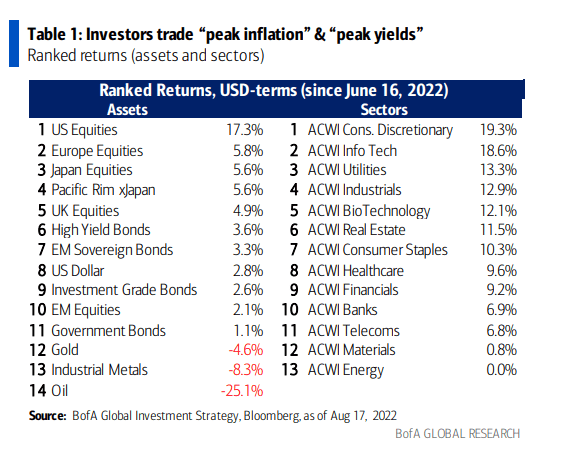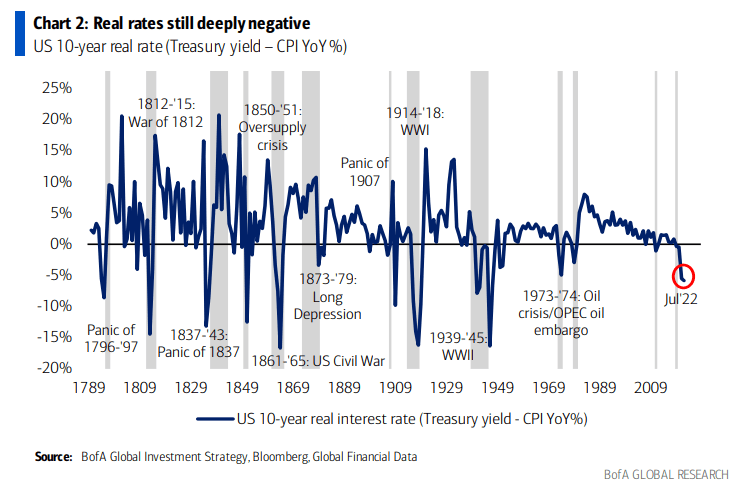This stock market rally echoes bear market moves going back to the onset of the Great Depression, according to BofA Securities.
The average S&P 500 (SP500) (NYSEARCA:SPY) gain in 43 bear market rallies of more than 10% going back to 1929 is 17.2% over 39 trading days. In this case it is up 17.4% in 41 days, a "textbook" example, strategist Michael Hartnett wrote in the weekly Flow Show note.
Bear rips are always narrow and in this case 30% of the S&P's gain is due to just four stocks: Amazon (AMZN), Apple (AAPL), Microsoft (MSFT) and Tesla (TSLA), Harnett said.
U.S. stocks have accounted for 86% of the gain in global equities, he added. The rip winners have been growth sectors (XLK) (XLC) (XLY) and bond proxies (XLU) (XLRE) and the losers Energy (XLE) and Materials (XLB) "as investors trade 'peak inflation' and 'peak yields.'"
A risk for bulls is that whether the "Fed knows it or not, they're nowhere near done," Hartnett said.
Real rates are "still deeply negative (and) Fed tightening so limp (for every $100 of bonds Fed bought during COVID, $5tn in total, they have sold just $2)," he said, yet "very few fear Fed (think 'pivot' & return of meme stocks)."
He noted that the "last time Fed ended hiking cycle with negative real rates was 1954 & even assuming CPI gains halve next 6 months inflation 5-6% next spring."


Comments